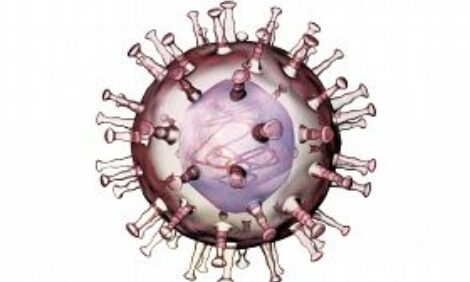



Pirbright scientists investigate pig coronavirus infection to understand COVID-19 in humans
Researchers explore how coronaviruses cause disease, how the immune system respondsResearchers at Pirbright have developed a pig respiratory coronavirus (PRCV) model which will help to understand how coronaviruses cause disease and how the immune system responds to them.
Human coronaviruses such as Middle East respiratory syndrome (MERS) and severe acute respiratory syndrome (SARS) are spread from animals to people, these are known as zoonotic viruses. Research to understand coronaviruses and how to control and prevent their spread has the potential to benefit human and animal health.
Pigs are good for modelling human disease because of the similarity in size and how their immune systems work. They are also naturally infected with PRCV and have varying symptoms and severity, just like people with COVID-19.
It is hoped that this will also shed light on how coronaviruses, like SARS-CoV-2 which causes COVID-19, infect humans and the measures that can be put in place to reduce the spread and severity of disease.
Published in Frontiers in Immunology, the research is designed to understand what factors result in mild or severe disease in pigs, to then inform the development of new control strategies for emerging livestock and human coronaviruses.
Currently, relatively little is known about why the disease severity varies and how the immune system fights these coronaviruses.
Four strains of PRCV were investigated in the study which revealed that those viruses that replicated in the lungs caused more severe disease. Scientists also discovered that all virus strains multiplied in the upper respiratory tract and in the nose, as seen with SARS-CoV-2.
According to the study, the time course of infection of PRCV 135, which caused the most severe pulmonary pathology, was investigated. Virus was shed from the upper respiratory tract until day 10 post infection, with infection of the respiratory mucosa, as well as olfactory and sustentacular cells, providing an excellent model to study upper respiratory tract disease in addition to the commonly known lower respiratory tract disease from PRCV. Infected animals made antibody and T cell responses that cross reacted with the four PRCV strains and Transmissible Gastroenteritis Virus.
Those strains that caused severe disease were also able to multiply in vitro in organ cultures, findings that will help us understand how these viruses enter cells, replicate and how some immune cells respond to virus infection.
Dr Elma Tchilian, Head of the Mucosal Immunology group at Pirbright said: “This research is an important step to understanding coronaviruses in their natural hosts. By exploring disease in pigs, and the mechanisms of infection we will gain insights into pig health which can also be applied to humans with COVID-19. This will help to improve our knowledge of COVID-19 and the most effective controls that can be put into place to slow the spread of disease.”

